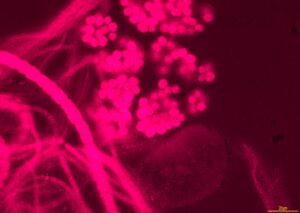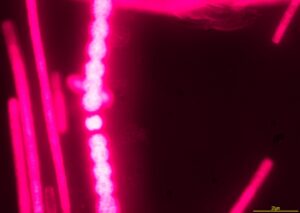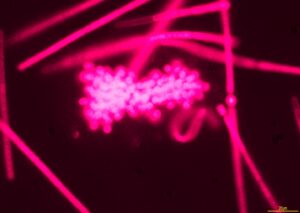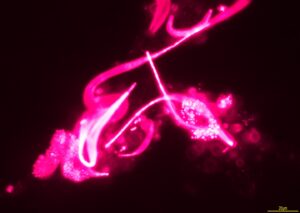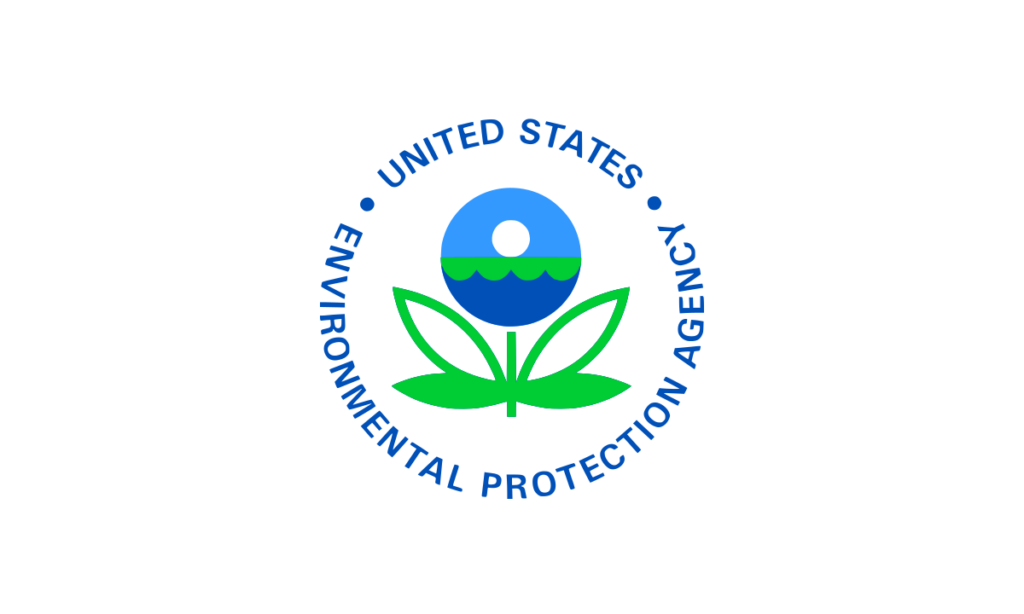 Hilary snook – Environmental Scientist, USEPA New England Regional laboratory
Hilary snook – Environmental Scientist, USEPA New England Regional laboratory
Cyanobacteria (more commonly known as blue-green algae) are microscopic organisms found in water. Under normal circumstances, they are present in such low concentration they cause no problems. However, in warm, still and nutrient-rich bodies of water such as ponds and lakes in summer, they can quickly multiply to create blooms.
Cyanobacteria blooms can be dangerous to both humans and animals, creating what are known as cyanotoxins. There is no treatment for this toxin, which is one of the most potent naturally occurring poisons. Since toxic blooms can be difficult to detect simply by looking at the water, environmental testing of cyanobacteria is important to determine whether water is safe for the public, or whether warnings or swimming bans must be put in place.
Unique pigments from cyanobacteria that auto-fluoresce at a specific wavelength, detected with the help of an optimised optical filter setup.
Epifluorescence microscopy uses illumination from the CoolLED pE-300lite.
At the United States Environmental Protection Agency (USEPA) New England Regional laboratory, we use epifluorescence microscopy to detect pico cyanobacteria in water samples. We have a CoolLED pE-300lite Illumination System, utilizing optical filters to illuminate emission wavelengths produced by pigments found almost exclusively in cyanobacteria. This has been found to be very useful for the verification of pico cyanobacteria found in ambient waters that are difficult to see, much less identify under standard light microscopy. Pico cyanobacteria are in fact the smallest of all cyanobacteria, with a cell size of 0.2 to 2.0 µm.
The illumination from the CoolLED pE-300lite does a great job for this application, and has the added bonus of no down time or heat build-up within the lamp, which adds to its utility. We are really enjoying the product, which has replaced our older mercury lamp.
Find out how you can support your favourite registered charity and Share your Science!
